Maintaining a proper balance is crucial when it comes to the functionality of a septic system. Septic tanks collect and treat wastewater from your household, ensuring it is safely disposed of.
However, if your septic tank becomes full or overloaded, it can lead to potential issues that require immediate attention.
Now, you might wonder whether it’s safe to continue your daily routines, such as taking a shower when your septic tank is full. The answer is no.
It is important to note that septic systems are designed to handle a specific volume of wastewater, and when they surpass their capacity, various problems can arise.
By examining the potential consequences and considering precautionary measures, you can make informed decisions about using water in your home while effectively addressing the issue of a full septic tank.
Can I Shower If My Septic Tank Is Full?
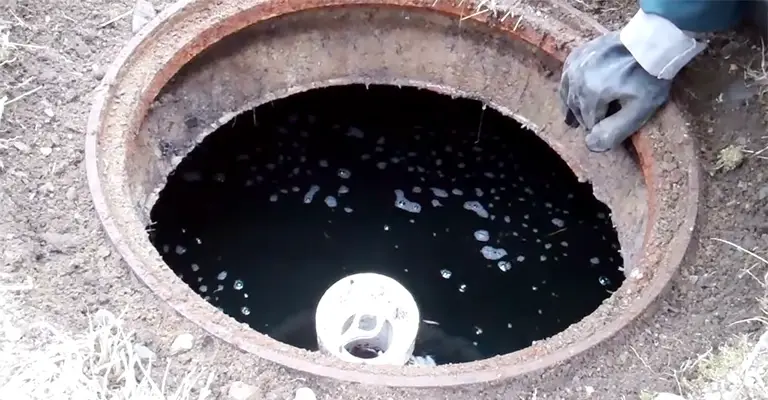
If you use your plumbing when your septic tank is full, you may experience overflows or sewage backup inside your home.
In some ways, the term “full” on a septic tank is inaccurate. Since all of the water from your house drains into it, your septic tank will technically be full fairly quickly.
In reality, most of the water filling is water that is collected and dispersed into your drain field.
In any case, if you feel that it’s full and will need to be pumped as soon as possible, you should try to shower as little as possible until that happens.
Nevertheless, if it’s fully operational, then you’re probably safe. Whenever you notice signs of a full septic tank, contact Cleveland Septic immediately to schedule a pumping appointment.
Let’s examine what happens when a septic tank is full and the signs that can be used to determine if your tank needs to be pumped to understand why this occurs.
What Does A Full Septic Tank Mean?
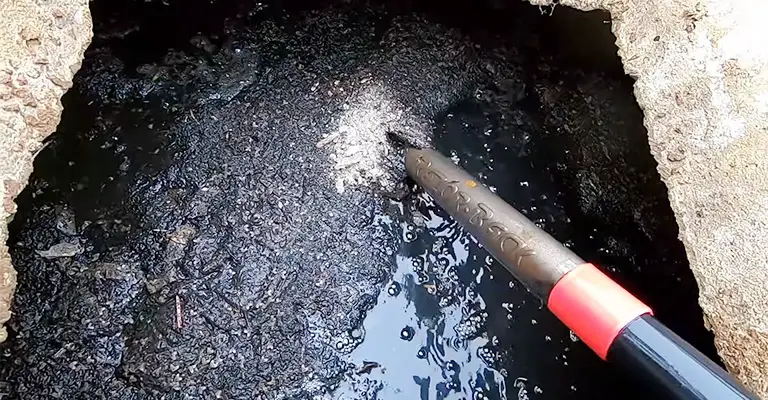
It’s very common for a septic tank to be full, indicating it’s functioning normally. The standard range, however, includes things such as clogged septic tanks and overfilled septic tanks, both of which are not good.
You might be running your septic tank system at one of three levels:
1. Septic tank overflows are a common cause of sewage backups. This is because your tank fills up to the brim with wastewater but does not drain properly into the absorption area. Instead, it clogs up and overflows the tank as it remains in the outlet pipe.
2. In the case of a full tank, it means the tank is running at a normal level. Wastewater flowed into the absorption or drain field of the septic system when the intake and outtake pipes were functioning normally.
Tanks are not always empty after they are pumped. Your septic system will be able to return to its full capacity once you begin using it again.
3. A clogged tank can get full because it is clogged with sludge. In such a case, the liquid or wastewater still flows to the drainage area, but the undissolved toilet paper or waste does not break down.
What Happens If You Shower When Your Septic Tank Is Full?
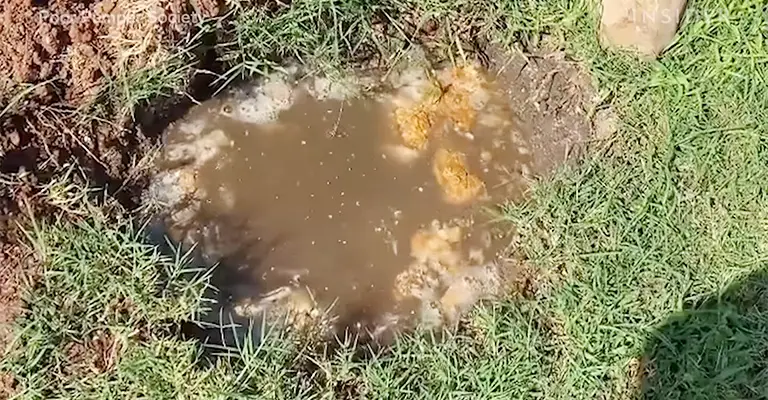
The septic tank must force an equal volume of water into the drain field every time wastewater enters it.
In a septic tank, the water level is permanently just below the outlet pipe, which means it is technically always full. A new entry of wastewater will raise the water level until it is ready to flow into the drain field.
Sludge Layers
It is always the case that the tank contains three different layers. As all the solid waste breaks down, a sludge layer forms at the bottom of the tank. Solid waste and toilet paper settle on top of the sludge layer when entering the tank.
As a result, bacteria degrade the solids into sludge, which takes up less space in the tank. It is always the top of the tank containing all the water.
Over time, the sludge layer will build inside the tank and take up more space. New solids cannot be added due to a lack of space.
As the sludge buildup thickens, solid waste will eventually accumulate to such a degree that it may spill out of the outlet pipe whenever you shower, flush the toilet, or otherwise use your plumbing.
A few years of pumping out the tank every few years will prevent the sludge layer from growing too high.
Flooding & Contamination
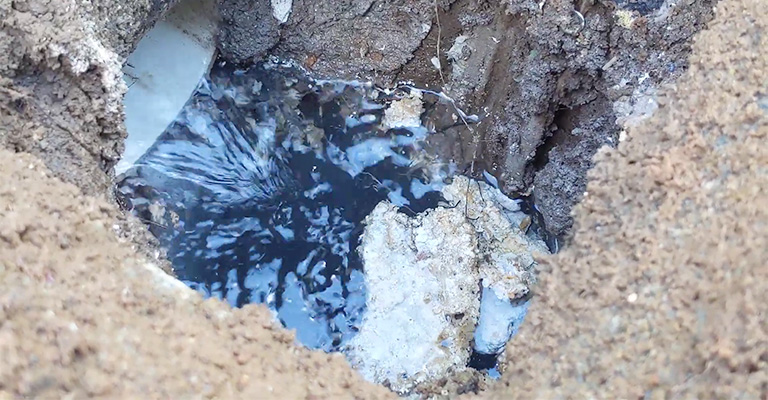
Currently, the drain field is only capable of handling wastewater. In a drain field with solids, the perforations in the drain pipe can get clogged up and prevent drainage.
In this way, the drain field could flood and contaminate the surrounding area. Clogged drain fields can only be fixed by digging up and replacing the entire drain field if they become clogged with solid waste.
Clogging of the outlet pipe is common if solid waste is allowed to drain out of the tank. If this occurs, it will be impossible for the tank to drain any more water.
Wastewater Disaster
Since there is nowhere for the wastewater to go, it will back up inside your home whenever you shower or use your plumbing.
Other than toilet paper and human waste, other materials can cause major problems with your septic system.
In the tank, flushable wipes, feminine hygiene products, condoms, cotton pads, dental floss, and other solids cannot break down. The solid layer will become very thick and will fill the tank up much faster as a result.
In addition, solids in the outlet pipe and the leach field are far more likely to clog the system. You should also avoid draining bleach or other harsh chemicals down the drain to keep your septic system functioning properly.
In this case, the pesticides will kill off most of the bacteria inside the tank. As a consequence, the solids will decompose more slowly.
Therefore, a solid layer will accumulate faster than bacteria can handle, which may lead to overflows.
How Can You Tell If Your Septic Tank Is Full?
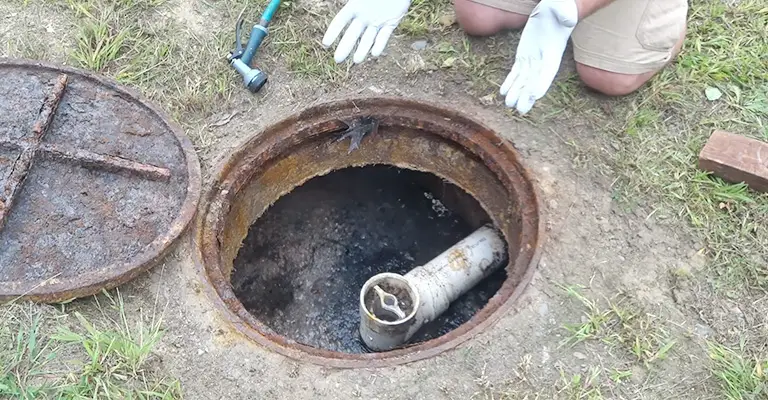
Flushing things down the drain is a big factor in your septic tank system. There are often materials thrown down the drain that do not decompose. Over time, that adds up!
Other than natural buildup, septic systems can suffer from other conditions that could indicate a pumping or evaluation by a professional is needed.
Sewage Backup In The Drains
You need to call a plumbing or septic service whenever you notice raw sewage backing up in your bathtub and shower drains. You can be harmed or suffer property damage when the sewage is backing up this far into your home.
Your Home Or Yard Smells Like, Well, Sewage
It is possible that these odors come from the drains or toilets and that they may indicate septic problems. When a clog in your ventilation system traps gases, this can happen.
In the case of sewage smells, you should call a professional since septic tanks emit methane, carbon dioxide, and nitrous oxide.
Water Starts To Pool In Your Yard
Your septic tank may be overflowing if you notice standing water or overflowing water at the location of your septic tank. There is a major difference between wastewater and standing rainwater in that wastewater has a distinct smell.
Your Lawn Is Suddenly Growing Lush, Green Grass
It may seem strange, but the grass around your septic tank may appear healthier than the surrounding grass, indicating it is time to pump it out.
Your Pipes Make A Gurgling Sound Or Drain Very Slowly
The gurgling occurs when air is trapped inside the pipes and prevents water from flowing down the drain. There are small pockets of air that form, resulting in gurgling sounds.
Those problems can also arise if your drains are blocked or clogged with dirt, hair or paper residue and if septic tanks are full.
You Have Trouble Flushing Your Toilet, Or It’s Constantly Backing Up
You might realize you have a bigger problem than a clogged drain if all your bathrooms drain slowly or are hard to flush.
Possibly, the problem is with the septic tank. Usually, this is one of the first signs that your septic tank is filling up, so you should seriously consider taking action.
What To Do If The Tank Keeps Filling Up With Water?
If your septic system works, it will drain excess liquids to the leach field. Nonetheless, if the tank is filled with excess water, the surplus water makes the solid waste harder to dissolve.
Solid waste is eventually pushed into the distribution pipes, causing a blockage. Alternatively, excess water levels can rise above normal in the tank.
A septic system can overflow if too much water is being pumped down the drainage system at once, such as when three household members take showers simultaneously, or downspouts are not properly directed into the system.
How to prevent your tank from filling with water:
- Whenever you drain water, try to reduce the amount.
- It is important to ensure that your downspouts point away from your tank and that your drainage system is up to code.
- Ensure that only one shower is being taken at a time in your household.
- Avoid deep-cleaning clothes by washing them over a few days instead of simultaneously.
- Using effective showerheads and faucets can also help control water flow.
How Should You Handle Your Filled-Up Septic Tank?
When your septic tank is full, you should prepare yourself by taking a shower before it gets full. The best time to pump your system is just before the rainy season or just before a storm strikes if it is already full.
Maintain and clean your rain gutter drains so water can flow around your leach field and avoid puddles. We recommend having your septic tank emptied every two or three years unless you’re familiar with what you’re doing.
Obviously, you can cross that bridge once you get to it if you can’t estimate how long it will take the septic system to fill.
This can be accomplished by recognizing the indicators of a clogged septic tank. Inspection of the tank-to-house cleanout and smelling unpleasant odors in the house are among the things to be done.
Final Words
You should always keep your plumbing system in good shape to avoid septic tank failure. If you find any of these symptoms, you should contact an experienced plumber or septic tank service immediately.







